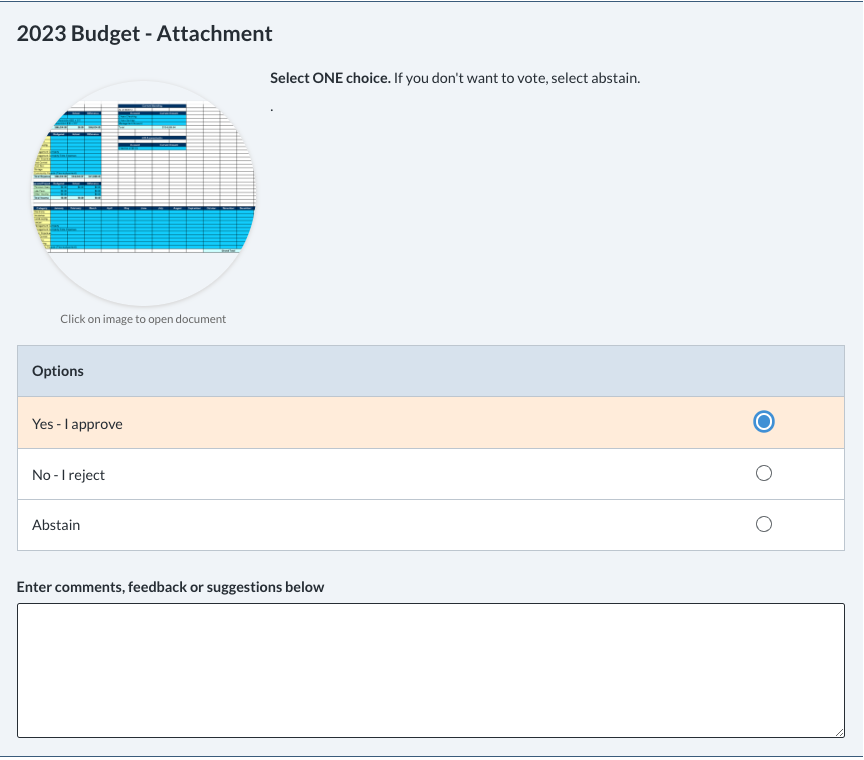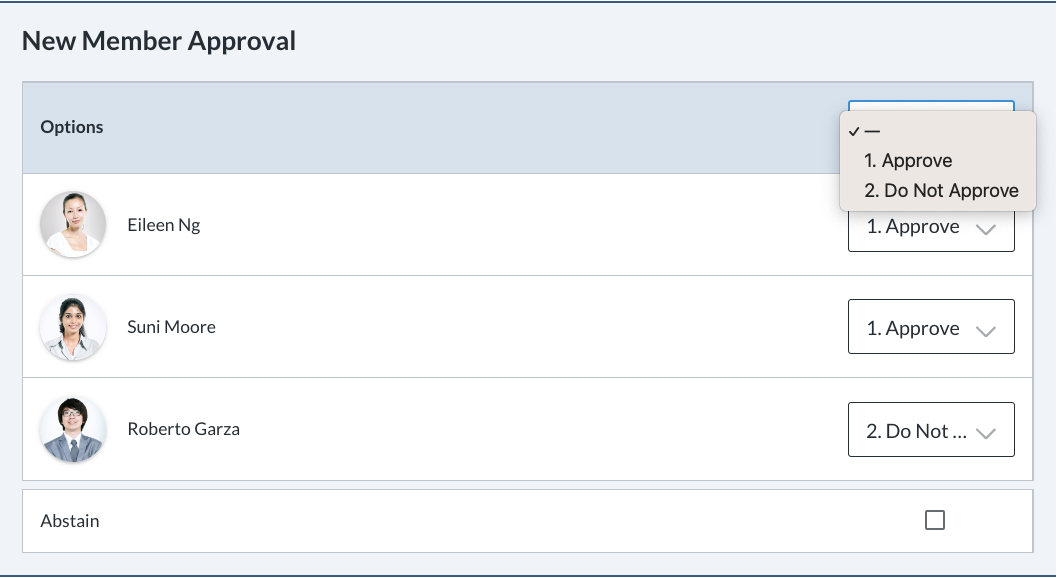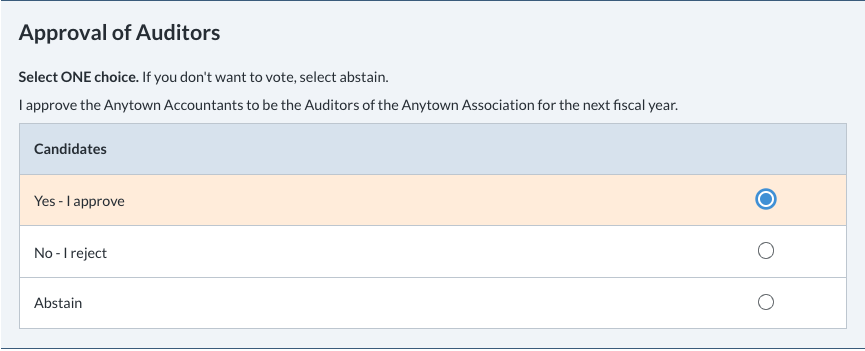Voters review and confirm an attached budget document and provide comments and feedback on the proposed budgetary items.

The situation surrounding a budget approval can be complex and typically have a significant amount of work that occurs prior to a vote that supports the budget. For the actual approval, members review the document and then vote to approve or reject the budget using ElectionBuddy’s Plurality Voting method. And since budgets are not static, reasons for acceptance or rejection can be gathered by asking for comments. This can help the vote administrator get valuable feedback about the budget, arguments for alternative allocations, and commentary on specific spending items.
Many organizations ask the broader membership to decide whether a new member can join the organization. Current organization members are presented with a ballot containing potential new members, and the current members evaluate each potential new member for acceptance as members.

When presented with a series of candidates for inclusion, Scored Voting allows voting members to quickly assess and decide if they accept the candidate to the membership. Each candidate is approved or rejected and the total tally of approvals determines acceptance. Tally methods can include points scoring (e.g., 1 for yes, 0 for no or abstain, with greater than 50% of the voting needed for acceptance), or a tally by veto vote, where a given threshold of no votes results in denial (e.g. 3 no votes results in the candidate being rejected for membership), or the vote administrator can use a plus/minus scale (e.g. 1 for yes, 0 for abstain and -1 for no, with a positive tally resulting in acceptance).
Voters approve or reject auditors or any motion with a majority threshold.

Organizations will often look to their members to approve motions with a majority threshold for decisions as needed as part of an annual meeting. This includes the prior year’s minutes, the meeting agenda, auditors, or any other business as defined by the organization's constitution or bylaws. For approval, a simple “yes - approve” or no - reject” vote is held, with tallying occurring using Plurality Voting. Instead of the above, approval can be obtained by asking for only those voters that want to object to the approval to vote, and if any rejections are received, a more formal vote with a tally using the above format can be held.